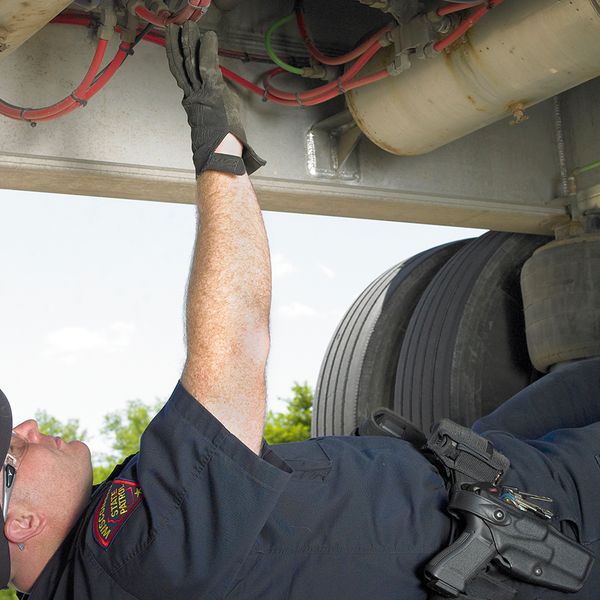How will proposed CSA changes affect you?
The Federal Motor Carrier Safety Administration (FMCSA) is planning eight sweeping changes to its Compliance, Safety, Accountability (CSA) program, affecting the way you and your drivers are scored and targeted for enforcement.
Currently, the Safety Measurement System (SMS) (i.e., CSA enforcement tool) analyzes motor carrier safety data — violations, crashes, and other metrics — to help identify high-risk motor carriers. The proposed changes to CSA would not change the data sources. It would, however, change how the information is used.
In part, the changes will bring a new roadside violation rating system, a new emphasis on drivers’ pre- and post-trip inspections, and new cut-offs for enforcement actions.
1. New safety categories
Currently, the SMS lumps violations and crashes into seven Behavior Analysis and Safety Improvement Categories (BASICs). FMCSA proposes replacing the BASICs with a new list of “safety categories”:
- Unsafe Driving
- Crash Indicator
- Hours of Service (HOS) Compliance
- Vehicle Maintenance
- Vehicle Maintenance: Driver Observed
- Hazardous Material (HM) Compliance
- Driver Fitness
The new Unsafe Driving safety category will include:
- The violations currently residing in the Controlled Substances/Alcohol BASIC; and
- Violations for operating while under an Out-of-Service Order, currently spread across multiple BASICs based on the underlying violation.
The Vehicle Maintenance BASIC is the largest category of violations. FMCSA is proposing to divide it in two, with one category focused on violations that drivers control.
The proposed safety categories are:
- Vehicle Maintenance: Driver Observed. Violations that may be identified by a driver during a pre- or post-trip inspection and/or while operating the vehicle; and
- Vehicle Maintenance. All other vehicle maintenance violations.
2. Segmentation
To ensure motor carriers are compared to other carriers with similar exposure to crash risk, the current SMS segments carriers in the Unsafe Driving and Crash Indicator BASICs based on vehicles operated (combination or straight).
FMCSA tested whether other safety categories would better identify high-risk carriers if a similar approach was used. Based on its analysis, FMCSA found:
- Segmenting the Driver Fitness category by straight and combination vehicles would more effectively identify carriers with higher crash rates in each.
- Segmenting the HM Compliance category by cargo tank and non-cargo tank carriers, in conjunction with raising the intervention threshold, is a better means of identifying those with higher HM violation rates.
3. Consolidated violations
FMCSA’s new methodology would consolidate similar CSA violations into groups, resulting in 973 violations placed into 116 groups. In the proposed model, if an officer cites a carrier for two or more violations from the same violation group during a roadside inspection, it is attributed to the group as a whole and scored only once.
4. Simplified severity weights
SMS currently assigns each violation a specific severity weight on a scale of 1 to 10 correlating with the citation’s crash risk.
The proposed severity weights simplify the process by assigning a weight of 1 or 2, with emphasis placed on violations that result in an OOS Order or that disqualify the driver.
Severity weighting would be as follows:
- OOS violations: 2
- Unsafe Driving violations that are disqualifying (383.51): 2
- All other violations: 1
5. Percentile ranking
Today’s SMS compares motor carriers in each BASIC against similar motor carriers (peers) and assigns a percentile ranking. The peer group is based on the number of inspections and crashes. As new data is added, a carrier may jump to a new peer group — and receive a much higher score — even though the carrier may be doing the same or even better in the BASIC.
To prevent sudden jumps, FMCSA proposes a “proportionate percentiles” approach, which uses the exact number of inspections and crashes to assign a percentile for a motor carrier. It does not rely on the current cutoffs for peer groups.
6. Intervention thresholds
FMCSA identifies high-risk carriers through their percentile rankings (also known as CSA scores). If they exceed a predetermined threshold, the agency will take enforcement action ranging from warning letters to targeted roadside inspections to investigations.
Those BASICs with a higher correlation to crash risk have been given more stringent (lower) thresholds. FMCSA studied whether adjusting the thresholds would better identify high-risk carriers. The agency found that the Driver Fitness and HM Compliance categories have the lowest correlation to crash risk. The proposed methodology would adjust those two safety categories.
The Driver Fitness thresholds would increase from:
- 80% to 90% for general carriers;
- 65% to 75% for passenger carriers; and
- 75% to 85% for HM carriers.
The HM Compliance thresholds would increase from 80 percent to 90 percent for all carrier types.
7. Recent violations
SMS currently assigns percentiles based on the past two years of data. This will remain the case, but the system will only calculate a score if the motor carrier has received at least one roadside inspection violation in the category within the past 12 months in the following safety categories:
- HOS Compliance,
- Vehicle Maintenance,
- Vehicle Maintenance: Driver Observed,
- HM Compliance, and
- Driver Fitness.
The Unsafe Driving and Crash categories will continue to assign a percentile ranking for all carriers.
Removing carriers with no recent violation would allow the agency to focus its resources on carriers that pose a greater safety risk.
8. Updated utilization factor
Currently, two CSA BASICs (Unsafe Driving and Crash Indicator) use a “utilization factor” to account for a carrier’s level of exposure to inspections and crashes. The factor takes into consideration a carrier’s average number of power units (PU) and vehicle miles traveled (VMT). The utilization factor is currently applied to those that drive up to 200,000 VMT per average PU. FMCSA found that carriers are reporting higher VMT than they did when the current methodology was developed.
The proposed methodology would extend the factor to those carriers that drive up to 250,000 VMT per average PU. This change reflects current trends and will result in more accurate measures.
A chance to offer comments
FMCSA is accepting comments on the proposed changes through May 16, 2023. Parties may offer input through regulations.gov referencing Docket No. FMCSA-2022-0066.
Key to remember: FMCSA’s proposed changes to the SMS methodology are meant to simplify and fine-tune the current process of identifying high-risk carriers using safety data. Stakeholders are encouraged to review the revisions and offer comments.
































































